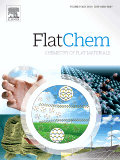
FlatChem
Scope & Guideline
Championing Open Access for Groundbreaking Material Science
Introduction
Aims and Scopes
- Synthesis of 2D Materials:
Research on the development and optimization of synthesis methods for two-dimensional materials such as graphene, MXenes, and transition metal dichalcogenides (TMDs), focusing on scalable and environmentally friendly approaches. - Nanocomposite Applications:
Exploration of hybrid materials that combine 2D materials with other substances for enhanced properties in applications such as catalysis, energy storage, and environmental remediation. - Electrocatalysis and Energy Conversion:
Investigation of electrocatalytic materials and systems for hydrogen evolution, oxygen evolution, and CO2 reduction, highlighting sustainable energy technologies. - Environmental Remediation:
Studies on the use of 2D materials for wastewater treatment and pollutant degradation, showcasing their potential for addressing environmental challenges. - Biomedical Applications:
Research on the biocompatibility, drug delivery systems, and biosensing capabilities of 2D materials, indicating their potential in medical and healthcare applications. - Theoretical and Computational Studies:
Utilization of density functional theory (DFT) and other computational methods to predict and analyze the properties and behaviors of newly developed materials.
Trending and Emerging
- Sustainable Synthesis Methods:
There is a growing trend towards green and sustainable synthesis methods for nanomaterials, utilizing waste materials and environmentally benign processes. - Flexible and Wearable Technologies:
Research on flexible electronics and wearable devices incorporating 2D materials is on the rise, driven by the demand for portable and adaptable technology solutions. - Multifunctional Nanocomposites:
The development of nanocomposites that serve multiple functions, such as energy storage, sensing, and catalysis, is emerging as a significant focus area. - Advanced Electrocatalysts for Energy Applications:
The search for novel electrocatalysts that enhance the efficiency of energy conversion processes, particularly in hydrogen production and CO2 reduction, is increasingly prevalent. - Environmental Nanotechnology:
Research is trending towards the application of nanomaterials for environmental remediation, including water purification and pollutant degradation, reflecting global sustainability efforts. - Machine Learning and AI in Materials Science:
The integration of machine learning and artificial intelligence in materials design and optimization is becoming a prominent theme, indicating a shift towards data-driven research methodologies.
Declining or Waning
- Traditional Bulk Materials:
Research on bulk materials has decreased as the focus shifts towards nanostructured and two-dimensional materials, which offer superior properties and functionalities. - Metal Oxide Nanoparticles:
The emphasis on standalone metal oxide nanoparticles for applications in areas like catalysis and sensing is declining, as more researchers are exploring hybrid systems that incorporate 2D materials. - Single-Use Applications:
Studies focusing on single-use applications of materials, particularly in areas like disposable sensors or packaging, are decreasing in favor of more sustainable and multifunctional approaches. - Conventional Energy Storage Systems:
Interest in traditional battery technologies without integration of advanced materials is waning as research increasingly focuses on nanostructured materials and hybrid systems for improved performance.
Similar Journals

Accounts of Materials Research
Empowering researchers with cutting-edge insights.Accounts of Materials Research is a premier journal published by the American Chemical Society, focusing on the multidimensional field of materials science. With a robust impact factor and a commitment to open-access research, it serves as a vital platform for leading-edge discoveries from 2020 to 2024. The journal has rapidly ascended to the top quartile in multiple categories, including Chemical Engineering, Materials Chemistry, and Polymers and Plastics, demonstrating its significant influence within the academic community. Recognized by Scopus as a key resource—with remarkable rankings that place it in the 95th percentile of its field—Accounts of Materials Research is devoted to publishing high-quality, innovative research that addresses critical challenges in materials development and implementation. This journal is essential for researchers, professionals, and students seeking to stay informed about the latest advancements and collaborative opportunities within the interdisciplinary landscape of materials science.
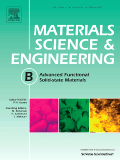
Materials Science and Engineering B-Advanced Functional Solid-State Materials
Driving Excellence in Functional Material DevelopmentMaterials Science and Engineering B: Advanced Functional Solid-State Materials, published by Elsevier, stands as a pivotal platform in the realm of materials science, focusing on the development and characterization of advanced solid-state materials. With an ISSN of 0921-5107 and E-ISSN of 1873-4944, this journal operates out of the United Kingdom and addresses critical issues in condensed matter physics, mechanical engineering, and mechanics of materials. Its consistent recognition, evident in its Q2 quartile rankings across multiple engineering and physics categories and a respectable scope of convergence from 1988 to 2024, signifies its substantial contribution to the field. Researchers and professionals seeking a venue for cutting-edge work will appreciate the journal's commitment to advancing knowledge in functional materials, with its open access features ensuring that innovative findings are readily accessible. Join a community of leading scholars engaging with the latest advancements, shaping the future of materials science.

ChemNanoMat
Fostering Collaboration in Cutting-Edge ResearchChemNanoMat is a prestigious academic journal published by WILEY-V C H VERLAG GMBH, dedicated to the rapidly evolving fields of nanoscale materials and their applications in diverse areas such as biomaterials, energy engineering, and environmental sustainability. With the journal's ISSN 2199-692X and recognized quality, as evidenced by its Q2 rankings across multiple categories—including Biomaterials and Renewable Energy—ChemNanoMat serves as a crucial platform for researchers, professionals, and students to disseminate their findings and foster collaborations. Operating from Germany, the journal encourages the exploration of innovative materials solutions to meet tomorrow's challenges. While it does not currently offer open access options, it remains highly regarded in the academic community with a competitive impact factor that emphasizes its relevance and influence in guiding future research directions. Covering a broad scope from 2015 through 2024, ChemNanoMat is key for anyone invested in the advancement of materials chemistry and related scientific fields.
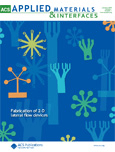
ACS Applied Materials & Interfaces
Elevating Knowledge in Materials Science and NanotechnologyACS Applied Materials & Interfaces, published by the American Chemical Society, stands as a leading journal in the field of applied materials, nanotechnology, and interdisciplinary research in medicine. With an impressive Impact Factor that places it in the Q1 category across Materials Science, Medicine, and Nanoscience and Nanotechnology, this journal consistently ranks among the top tier, evidencing its significance and influence in advancing scientific knowledge. The journal’s scopus ranking of 33 out of 463 in General Materials Science further underscores its critical role in disseminating innovative and high-quality research. Although it is not an open-access journal, a diverse range of access options is available, ensuring that vital research findings are accessible to a broad audience of researchers, professionals, and students. Targeting breakthroughs in the synthesis, characterization, and application of materials and interfaces, ACS Applied Materials & Interfaces serves as a pivotal platform for publishing cutting-edge studies essential for future technological advancements.
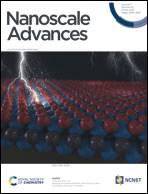
Nanoscale Advances
Innovating at the Nanoscale for Tomorrow's Solutions.Nanoscale Advances, published by the Royal Society of Chemistry, stands out as a leading open-access journal dedicated to advancing the field of nanoscience and nanotechnology since its inception in 2018. With a specialized focus on areas such as atomic and molecular physics, bioengineering, chemistry, and materials science, this journal has consistently achieved top-tier rankings across several categories, reflecting its high-impact contribution to research and innovation. Currently classified in the Q1 quartile for both Atomic and Molecular Physics and Chemistry (Miscellaneous), and Q2 for Bioengineering, its prestige is underscored by impressive Scopus rankings, including a notable 34th position in General Engineering. With its commitment to disseminating high-quality research, Nanoscale Advances serves as an invaluable resource for researchers, professionals, and students alike, fostering collaboration and scholarly exchange in the rapidly evolving landscape of nanotechnology.

ACS Materials Letters
Pioneering Discoveries in Chemical Engineering and BeyondACS Materials Letters is an esteemed peer-reviewed journal published by the American Chemical Society, emphasizing groundbreaking research and advancements in the fields of materials science, biomedical engineering, and chemical engineering. With a robust update and established reputation since its inception in 2019, this journal has rapidly ascended to the top tiers, achieving Q1 rankings in key categories such as Biomedical Engineering, Chemical Engineering (miscellaneous), and Materials Science (miscellaneous) in 2023. The journal boasts impressive Scopus rankings, including #14 in General Chemical Engineering and #19 in Biomedical Engineering, placing it among the elite publications in these domains. While not fully open access, ACS Materials Letters facilitates the dissemination of high-impact research accessible to academics and industry professionals alike. With its comprehensive scope and rigorous selection process, the journal serves as a vital resource for researchers and students eager to stay abreast of the latest innovations and technologies shaping materials science and engineering.

Frontiers of Materials Science
Unveiling Cutting-Edge Research in Materials ScienceFrontiers of Materials Science is a groundbreaking journal dedicated to exploring advanced materials and their applications within the ever-evolving landscape of materials science. Published by HIGHER EDUCATION PRESS, this journal offers a crucial platform for scholars and practitioners seeking to disseminate innovative research findings that foster interdisciplinary collaboration. Since its inception in 2011, the journal has enjoyed a notable Q2 ranking in the category of Materials Science (miscellaneous) as of 2023, positioning it among the noteworthy publications in the field with a Scopus rank of #222 out of 463. While predominantly published in China, the journal is committed to open access principles, allowing global accessibility to cutting-edge research. With its comprehensive coverage spanning materials synthesis, characterization, properties, and applications, Frontiers of Materials Science not only serves as a repository for academia but also bridges the gap between research and industry, making it an indispensable resource for researchers, professionals, and students alike.
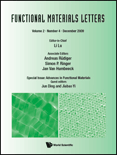
Functional Materials Letters
Connecting scholars in the realm of functional materials.Functional Materials Letters, published by World Scientific Publishing Co. Pte Ltd, is an esteemed academic journal dedicated to disseminating cutting-edge research in the field of materials science. Since its inception in 2008, the journal has provided a vital platform for researchers, professionals, and students to share their discoveries pertaining to functional materials, which are integral for diverse applications ranging from electronics to advanced manufacturing. With an ISSN of 1793-6047 and an E-ISSN of 1793-7213, the journal operates out of Singapore and maintains a notable presence in the global academic community, currently ranked in the Q3 quartile for materials science. Although it does not offer open access, the journal ensures that its publications are rigorously peer-reviewed, contributing significantly to the advancement of knowledge in this rapidly evolving field. Researchers aiming to stay at the forefront of materials science will find Functional Materials Letters an indispensable resource that highlights innovative findings and fosters collaboration among scholars.

C-Journal of Carbon Research
Advancing Carbon Science for a Sustainable FutureC-Journal of Carbon Research is an innovative and dynamic journal published by MDPI, situated in the picturesque city of Basel, Switzerland. Launched in 2015 and operating under an Open Access model, the journal aims to promote the dissemination of high-quality research related to carbon science, environmental sustainability, and renewable resources. With a current impact factor reflecting its growing influence in the field, the journal's standing is bolstered by its Scopus ranking, placing it in the 37th percentile in the Environmental Science category. It offers a platform for researchers, professionals, and students alike to engage with cutting-edge studies, reviews, and discussions that contribute to environmental science advancements. As the journal continues its convergence journey from 2022 to 2024, it remains committed to fostering scholarly exchange and interdisciplinary collaboration on pressing carbon-related challenges.
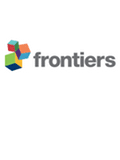
Frontiers in Materials
Connecting Researchers to Shape Tomorrow's Materials.Frontiers in Materials, an esteemed journal published by FRONTIERS MEDIA SA, is a leading platform in the field of Materials Science, with a notable impact factor placing it in the Q2 category of its discipline as of 2023. Since its establishment as an Open Access journal in 2014, it has fostered considerable academic exchange, allowing researchers from around the globe to share their innovative findings and insights. Based in Lausanne, Switzerland, this journal not only emphasizes high-quality peer-reviewed articles but also prioritizes rapid dissemination of research, as evidenced by its commendable Scopus ranking of #62 out of 196 in Materials Science (miscellaneous). By consistently striving to bridge the gap between academia and practical applications, Frontiers in Materials serves as an invaluable resource for researchers, professionals, and students seeking to delve into cutting-edge advancements and transformative applications in materials science.